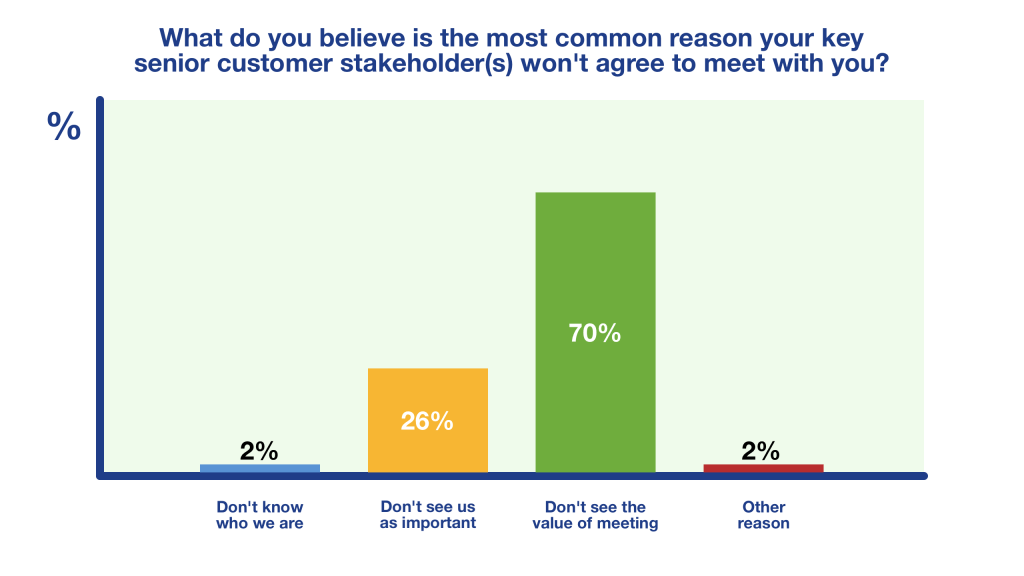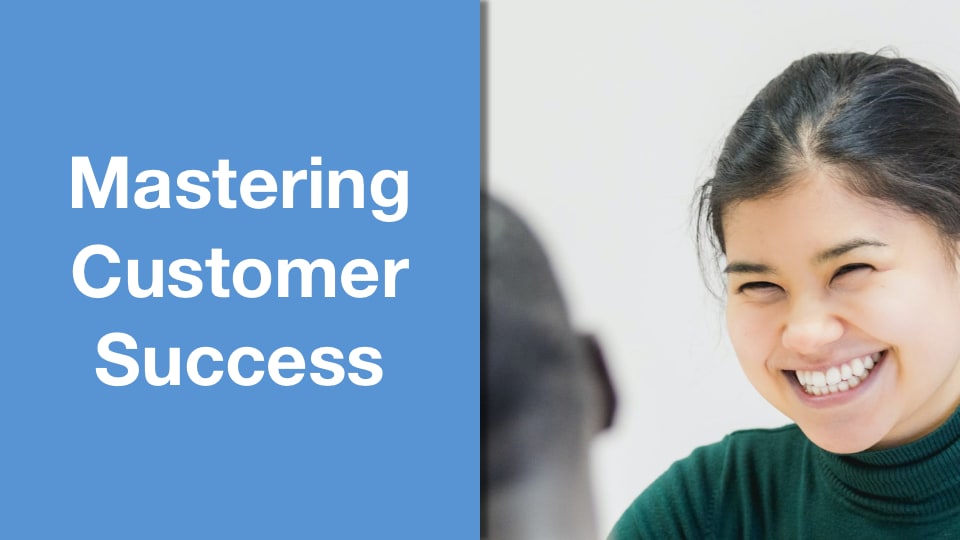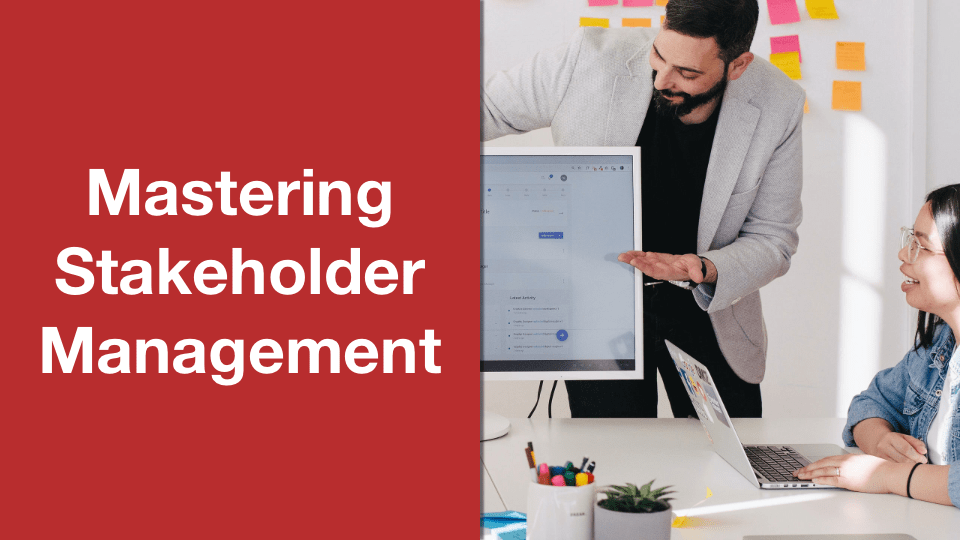One of the biggest challenges we hear from customer facing professionals is getting access to the all of the right stakeholders. If we’re not connected to the right people were at least partially blind to the true picture at the account. We might not fully understand how we are perceived, we might not be aligning our work to the overall vision of our customer, we might lack resources or critical support.
Let’s look now at 4 aspects of building and executing an access strategy for key customers stakeholders:
- What are the barriers to access?
- A simple model of stakeholder relationships.
- How do we use connections to make connections?
- The importance of stakeholder mapping.
What Are The Barriers To Access?
One word – value.
Key stakeholders don’t see the value in meeting with you so they won’t or do so once then become, shall we say, elusive. Another way of putting this is key stakeholders don’t see a relationship with you as important (because they don’t see the value).
That’s certainly what you indicated when we ran a LinkedIn poll earlier this year and it’s also what we hear, frequently, from customer facing professionals. Senior people won’t agree to meet because they don’t see the value.

If you’ve read our value section you’ll hopefully have a bunch of new ideas about defining and positioning your value with your stakeholders. Understanding your audience is key, fine tuning your message and presentation is key, above all talking about value in business language is key.
So you’re ready to talk. How do you get the meeting.
A Simple Model Of Relationships
A simple model of stakeholder relationships is critical if you are going to construct a clear picture of who connects with, influence and directs who at your customers.
We like to use the simple, three point model below when we think about the relationships within our customers:
- What’s the value for each stakeholder (we’ve covered that in depth)
- How can I use a relationship for access to more senior people
- What flows down, or in other words how can I use a relationship for indirect influence, to gain access to resources or to indirectly give direction?
You could make things more complex but there’s no need. Figure out just these three things and you are well on your way to mastering stakeholder management.
Connections Make Connections
You have three sets of connections you can use when ever you are trying to use your existing connections to make new connections:
- Your existing connections at your customer
- People in your organisation connected to people you want to connect with
- People in your broader network with connections to people you want to connect with
These are, in order of likely importance, the routes you have available. 3 you can more of less forget about. Unlikely to turn up as an option often and usually it’s too much of an ask of your existing contact. 2 is great if you have it – again you often won’t, but if you do make sure you put future value and a clear need for access at the heart of the request your colleague makes. 1 is where you’re going to spend most of your time and here there are 3 points:
- Think of gaining access as a campaign, not an event
- Deliver clear value for your existing connections before you ask them to connect you elsewhere
- Once again put future value and a clear need for access at the heart of the request your customer contact makes to person you want to connect with.
Update Your Stakeholder Map
We’ve covered a lot over the last 3 sections. Don’t try to keep this in your head.
Define a standard way of simply mapping your customer stakeholders (remember our three point approach), get into the habit of updating it either every time you learn something new or you are about to meet with any of the stakeholders on the map. Put the map in a system (CSM platform, CRM, Google sheet) and give access to anyone who can help you keep it updated or execute on the actions you’ve defined to build out your connections. Embed your plan in this map, who you are working with, what matters to them from a value perspective, who they can connect you with, who connects to them, your next actions and so on.
Above all – don’t try to keep this in your head. Did I say that already?



